In other news, I received a new lens the other week - a 50mm f/1.8 portrait lens, otherwise known as the "Nifty Fifty". It has a fixed focal length, meaning no zooming in or out, but I really haven't found that to be much of an issue, and at 50mm it's roughly close to the focal length of the human eye, meaning that what you see through the viewfinder should be more or less the same magnification as what you see normally. This lens has a ton of practical applications and really hasn't been off my camera since I got it.
First off, the wide maximum aperture allows for some seriously shallow depth of field. While I'm already sensing my skill improving past the "bokeh-whore" stage, I do love bokeh, and opening that aperture right up allows me to capture some really great shots.
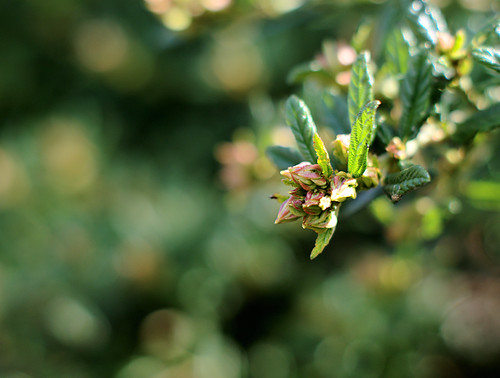
What I have learnt though, is that opening the aperture up to its widest at f/1.8 is inadvisable if you are doing close-ups and your subject might move even the slightest amount, e.g. a flower in a breeze. The DOF is so, so shallow that movement of the subject will throw it outside of that narrow focus area:
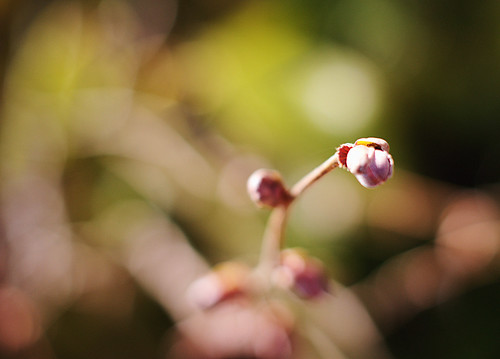
What's happened in the above shot (f/2.2) is that the breeze blew slightly and I ended up with the little leaves cupping the bud being totally focused, and the bud itself slightly out.
As I've used the lens more and learned about its strengths and weaknesses, it really has proved itself as a marvellous bit of glass. When I have used it for its intended purpose (portraits) the results have really been stunning.
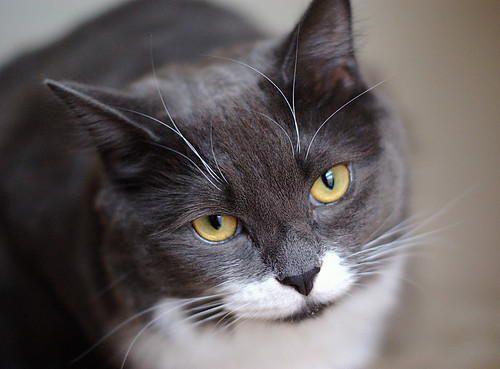
Just look at that little sweetheart. Doesn't his face just make you "aww"? Look at the little water droplets in his beard! Is that water or drool?!
This shot was taken the first day I had the lens, and I went mad with the wide aperture (that shot is f/1.8). The result is that, even at 6pm on a pre-Spring evening, there is enough light coming into the camera for the shutter speed to speed up and capture him crisply before he moved. Unfortunately though, the focus is roughly at the bridge of his nose, and due to the insanely shallow DOF, his eyes are ever so slightly out. If I had stopped the aperture down to about f/2.5 his whole face would have been tack sharp, and in fact reviews I have read say this particular lens performs at its best when stopped down to f/2.5 - f/2.8. Either way I am very happy with that shot.
The other most impressive use of the lens so far was when I went to see my friend's band play the other night; I took my camera to experiment with the sort of candid photography a gig atmosphere provides and when Dan spotted it he asked if I would try and get some shots of the band. I played the whole thing down a little (I'd never shot in such dark conditions before, am a total amateur, didn't want them to anticipate any really good shots) but I was really, really happy with the results.
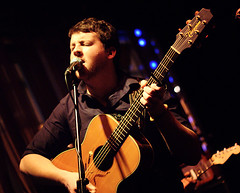
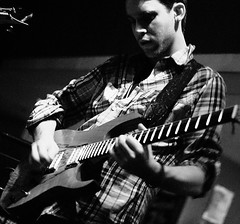
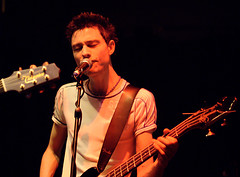

I opened the aperture up all the way (f/1.8) but because I wasn't right on top of the guys, the shallow DOF was less pronounced. This meant I was letting in the maximum amount of light possible. I also had to bump up the ISO (light sensitivity -- will explain this more when I get rounf to finishing the jargon post!) to 1600 which is very, very high and resulted in a lot of digital noise (or graininess) on the shots. However in doing so I was able to speed up the shutter speed to about 1/25 sec, and avoid the guys just being artsy blurs as they performed. Grain is always preferable to blur -- it can be fixed, to an extent, in some processing software, and also for the black-and-white shots it added a really gritty, "live" feel which I think added to the shots.
Speaking of black-and-white... my researching on the best way to turn a picture from colour into B&W has generally led me to believe that a) don't use your camera's B&W function as you then have much less control over the highlights in post-processing; and b) use the Channel Mixer instead of just desaturating as it means you have control over the highlights, luminosity and tones. I will cover B&W post-processing in more depth in the future, but the gig shoot has helped me to learn a lot more about how to do this successfully. Most of the B&W shots in that gig set were done because the real light was so red or unflattering; the Channel Mixer enabled me to turn the light into something more natural-looking.
Overall I am beyond happy with the 50mm lens. The band were so chuffed with the shots that they have asked me to do some staged promos. Also another friend whose girlfriend is very heavily pregnant has asked me if I would do some artsy bump shots before she drops -- the prospect of this is a little daunting but I'm going to do it; if it goes wrong at least it's just my friends and not someone who is paying me!
Erk...

0 comments:
Post a Comment